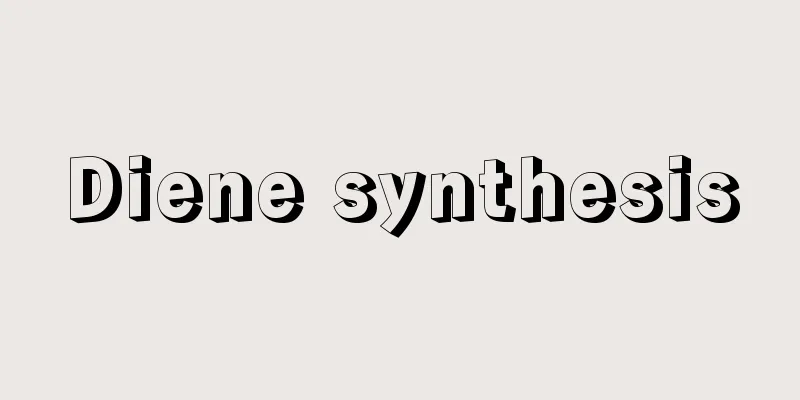Labor Bank - Roudoukinko

|
Abbreviated as "Rokin." A labor-only financial institution organized and operated jointly by labor unions, consumer cooperatives, and other labor organizations under the Labor Bank Law (Law No. 227 of 1953). Labor banks aim to eliminate the drawbacks of workers' funds serving capital through banks and other institutions, and to directly use the funds to improve workers' lives and economic status. Their operations are authorized by the Prime Minister and the Minister of Health, Labor, and Welfare, and are supervised by the Financial Services Agency and the Ministry of Health, Labor, and Welfare. Their operations are not aimed at the pursuit of profits, and are in principle non-profit activities that serve all members as part of workers' welfare and mutual aid activities, and they are neutral in not engaging in financing aimed at realizing the profits of specific organizations. Labor banks were established based on the principle of group membership, with labor unions and other groups as units. However, in light of the current situation in Japan, where there are many small and medium-sized enterprises and unorganized workers, the membership criteria have been relaxed, and now even ordinary workers who are not members of an organization can join. The main business of labor banks is to accept deposits from members and their members (indirect members), as well as ordinary workers, while also lending money for business funds, living expenses, education funds, housing funds, etc., and lending to various mutual aid businesses. In 1981, the Labor Bank Act was revised to include domestic exchange transactions for settling bills and checks, non-member deposits, non-member loans, and employee savings based on the Workers' Asset Formation Promotion Act, further expanding the scope of business. The National Association of Labour Banks and the Japan Labour Bank Federation have been established as the central organizations for labour banks. The former provides management guidance and liaison and coordination for each labour bank, while the latter handles fund raising, capital supply and demand adjustment, investment, domestic foreign exchange, government bond sales, defined contribution pensions, and other operations. In May 1996, the National Association of Labour Banks formulated "Reforms and Vision for the 21st Century" in response to the Japanese version of the Financial Big Bang. This vision aimed to change the policy of establishing labour banks and carrying out business activities at the prefectural level, and to establish a "Japan Labour Bank" (tentative name) by merging labour banks and expanding the area of operation, as well as to establish a management system that could respond to changes in the domestic and international economic environment. In November of the same year, the basic philosophy was revised to position labour banks as "cooperative welfare financial institutions that create dreams and empathy for workers." As a result, labour banks in the Kanto region (1 metropolis and 7 prefectures, including Tokyo, Kanagawa, and Chiba) were merged to form the Central Labour Bank, and those in the Kinki region (2 prefectures and 4 prefectures, including Kyoto, Osaka, and Hyogo) were merged to form the Kinki Labour Bank. They are also expanding the range of financial services available to members and constituents, and currently offer defined contribution pension plans, partner with Seven Bank to allow use of ATMs (automated teller machines) installed in convenience stores, etc., and are expanding their business areas to include childcare support loans, support for citizen finance such as "NPO banks", etc. As of the end of June 2008, there were 13 labor banks nationwide, with 9,833,291 indirect members and 670 branches. As of the end of July 2008, the total capital contributions were 90,446 million yen, the total deposits were 15,665,621 million yen (including transferable deposits), and the total loans were 10,292,137 million yen. [Kenji Yoshida] [References] | | | |Source: Shogakukan Encyclopedia Nipponica About Encyclopedia Nipponica Information | Legend |
|
略称労金。労働金庫法(昭和28年法律227号)に基づく労働組合、生活協同組合その他労働者の団体が協同して組織、運営する労働者専門の金融機関。労働金庫は、労働者の資金が銀行などを通じて資本に奉仕する弊害を排し、労働者の生活福祉や経済的地位の向上に直接その資金を生かすことを目的としている。事業は内閣総理大臣および厚生労働大臣から認可を受け、金融庁ならびに厚生労働省の監督を受けている。その事業は利潤の追求を目的とせず、労働者の福利共済活動の一環として組合員全体に奉仕する非営利活動が原則とされ、特定団体の利益実現を目的とした金融を行うことのない中立的な立場が定められている。 労働金庫の設立は、労働組合などを単位に団体加入制を原則として出発した。しかし中小企業や未組織労働者が多い日本の現状から加入基準を緩和して、現在では団体の構成員でない一般勤労者の加入も認められている。労働金庫のおもな業務は会員とその構成員(間接構成員)、および一般勤労者から預金を受け入れる一方、事業資金、生活資金、教育資金、住宅資金などの貸出や、各種共済事業への貸出も行っている。また1981年(昭和56)には労働金庫法の改正が行われて、手形や小切手を決済する国内為替(かわせ)取引、会員外預金、会員外貸出や勤労者財産形成促進法に基づく財形貯蓄なども扱うようになり、業務範囲が一段と拡大した。 労働金庫の中央機関として全国労働金庫協会と労働金庫連合会が設立されている。前者は各労働金庫の経営指導ならびに連絡・調整を行い、後者は資金調達、資金の需給調整、運用、内国為替、国債販売、確定拠出年金などの業務を扱っている。 1996年(平成8)5月、全国労働金庫協会は日本版金融ビッグバンに対応した「21世紀への改革とビジョン」を策定した。このビジョンは、原則として労働金庫の設置や事業活動において都道府県を単位に実施してきたこれまでの方針を改め、労働金庫の合併など広域化を図って「日本労働金庫」(仮称)を創設することや、内外の経済環境の変化に対応して経営体制を確立することを目的にしたものであった。また同年11月には基本理念を見直し、「労金は働く人の夢と共感を創造する協同組織の福祉金融機関」と位置づけた。これにより東京、神奈川、千葉など関東地方1都7県の労働金庫は合併して中央労働金庫に、京都、大阪、兵庫など近畿地方2府4県は近畿労働金庫となるなど統合化が図られた。また会員や構成員に対する金融サービスの拡充を進め、現在では確定拠出年金の取扱いや、コンビニエンス・ストアなどに設置されているATM(現金自動預金支払機)が利用できるセブン銀行との提携、育児支援ローン、「NPOバンク」など市民金融の支援など事業領域を広げている。なお、2008年6月末現在の全国の労働金庫数13、間接構成員数983万3291人、店舗数670、また2008年7月末現在の出資金904億4600万円、預金総額15兆6656億2100万円(譲渡性預金も含む)、貸出金総額10兆2921億3700万円となっている。 [吉田健二] [参照項目] | | | |出典 小学館 日本大百科全書(ニッポニカ)日本大百科全書(ニッポニカ)について 情報 | 凡例 |
<<: Labor union - trade union English
>>: Labor agreement - labor agreement
Recommend
Fishery Mutual Aid Business - gyogyokyousaijigyo
…After six years of testing conducted by the gove...
Wang Fuchen - Wang Fuchen
…They were Ming military commanders who had surre...
Goldschmidt, R.
...There is also no consensus as to whether this ...
Gimpo International Airport
An international airport in South Korea. It is lo...
Malay - Mareego
Austronesian language spoken in the Malay Peninsu...
Hori Katsuna
Born: 1716, Kumamoto [Died] April 24, 1793 (Kansei...
Canna edulis (English spelling) Cannaedulis
…[Tora Saburo Kawabata]. … *Some of the terminolo...
Pascal
A programming language designed and developed for ...
Kiyosu Conference
A Japanese movie released in 2013. Director, origi...
Rocky Mountains - Rocky
A mountain range that runs north to south through ...
Booklet - Sasshibon
A general term for books bound with glue or thread...
McIntosh, PC (English name) McIntoshPC
… [concept] Sports is a general term for modern s...
Difference - step
〘noun〙 (in mathematics) 1. The difference between ...
Metallization phenomenon
…The skin at the entrance and exit of the electri...
Urakami
...The coastal areas also have good natural harbo...




![Gunge [town] - Kooge](/upload/images/67cb8e032363c.webp)




